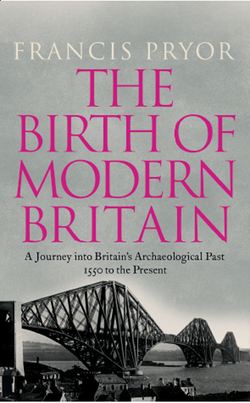Читать книгу The Birth of Modern Britain: A Journey into Britain’s Archaeological Past: 1550 to the Present - Francis Pryor - Страница 7
ОглавлениеAcknowledgements
FROM THE MOMENT I began this four-volume archaeological history of Britain I knew that, when I ventured outside my own field of expertise in later prehistory, I would have to rely on the cooperation and goodwill of many colleagues. But instead of encountering silence or, worse, resentment, I was astonished by the way medievalist scholars took me under their wing and made the task of writing Britain ad and Britain in the Middle Ages such a pleasure. For the present work I have had to draw on the knowledge of many post-medievalists and yet I have still to detect any impatience with my ceaseless enquiries. Two people who have had to bear the brunt of my curiosity are Drs Marilyn Palmer and Audrey Horning, both colleagues of mine in the School of Archaeology and Ancient History at the University of Leicester. They gave me informal seminars, sometimes even without the benefit of lunch, which helped me turn my face in what I hope has proved the right direction. Thank you both: my gratitude knows no bounds.
Michael Douglas, series editor at Time Team, shares my interest in the archaeology of more recent periods and played a major part in arranging the excavation of the Risehill navvy camp, North Yorkshire, and the Norman Cross prisoner-of-war Depot, Peterborough. While in Yorkshire, Bill Bevan was a great source of references and advice. At Norman Cross, Ben Robinson, the Peterborough City Archaeologist, was as ever amiable and authoritative, and Dr Henry Chapman, the Time Team surveyor, helped me acquire plans of the Norman Cross Depot site in advance of the full publication, which was scheduled to appear after my own manuscript’s deadline. Dr Mike Nevell has been a splendid guide to the world of industrial archaeology. Neil (now Sir Neil) Cossons and David Crossley were a great help when I was first getting interested in industrial archaeology and we all sat on the Ancient Monuments Advisory Committee of English Heritage. Happy days! Another more than helpful friend, who goes back a long time with me, is David Cranstone. David started life as a prehistorian with me at Fengate and is now a leading authority on industrial archaeology in general and salt mines in particular. He kindly gave me several useful hints and references.
At HarperCollins I am grateful to Martin Redfern, who took on Richard Johnson’s mantle, and to Ben Buchan, whose editorial comments have greatly strengthened this book. I am also deeply indebted to Rex Nicholls who drew the line drawings and to the book’s designer. Special thanks too to Sophie Goulden, Ben Buchan, Richard Collins and Geraldine Beare.
I am also grateful to family members who provided me with unexpected information on various topics: Roderick Luis (Crimean War huts) and Nigel Smith (navvies in the North Pennines). Nigel, a bookseller by profession, found me articles and out-of-print books and his elder sister, my wife Maisie, organised my photographic expeditions and managed to sort out the mystery of the two Causey Arches – an example, incidentally, of how the internet can waste time and lead one astray. Heaven alone knows how she has put up with my moods during this four-book marathon. Finally, and despite the best efforts of all of the above, any errors that remain are mine alone.
